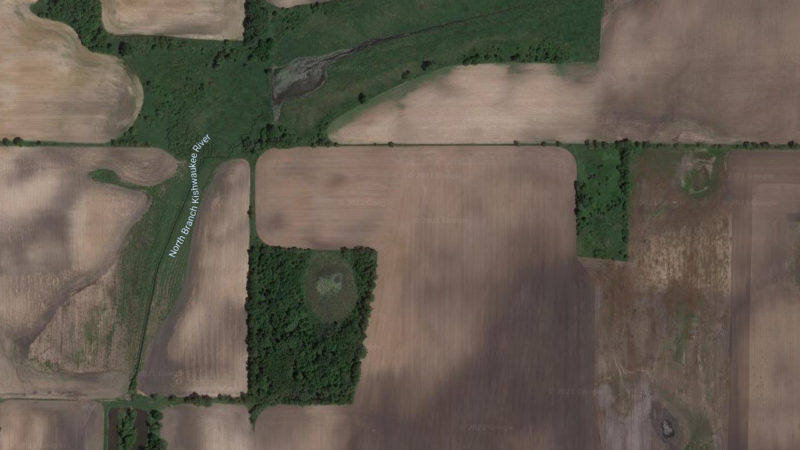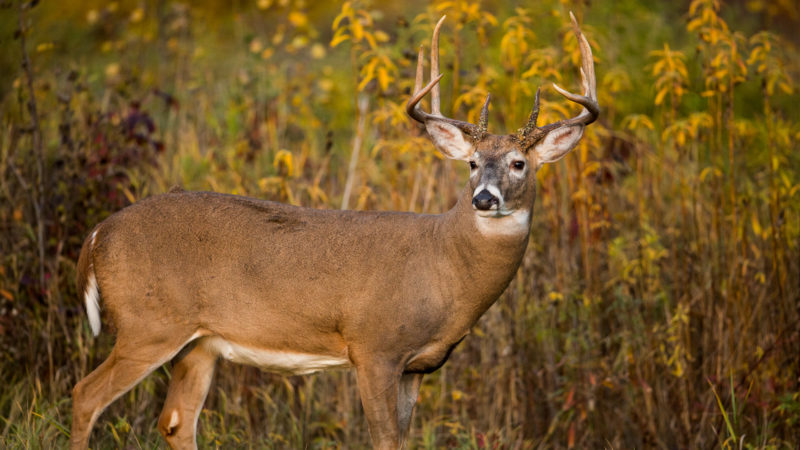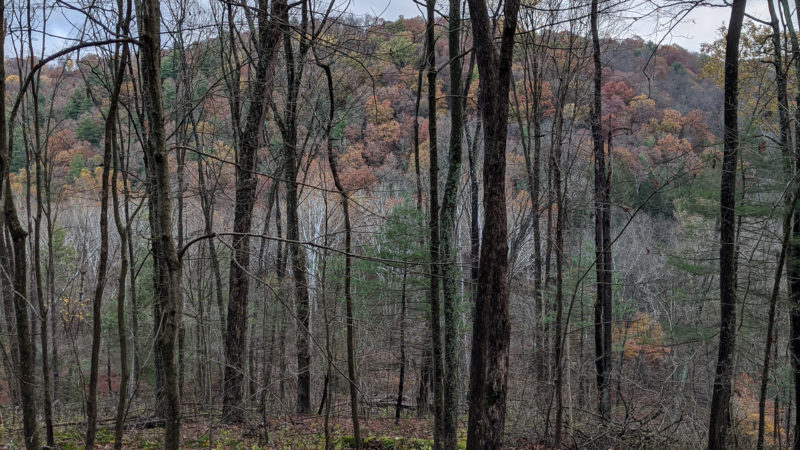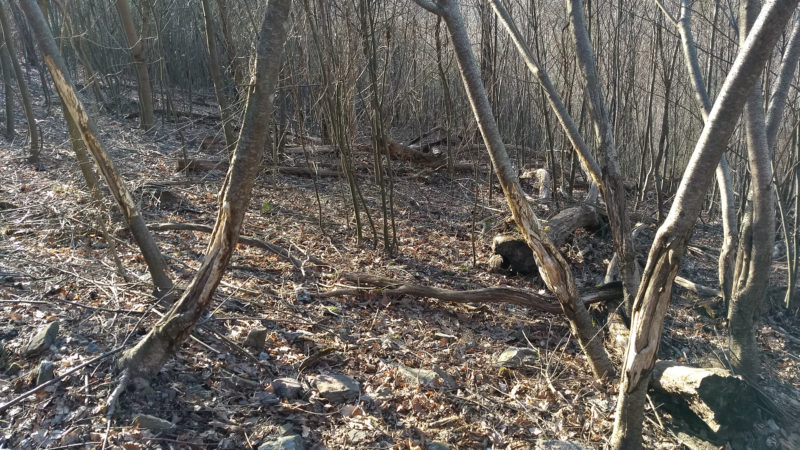Scientists working in Penn State University’s “Deer-Forest Study” have radio collared more than 100 deer and tracked their movements in various habitat types throughout the state. With thousands of data points and hours of analysis, they have been able to provide hunters with remarkable access into the everyday life of a deer.
As a result, researchers were able to gain key insights into how habitat heavily influences home range size among whitetails, as well as how factors such as seasonal changes and hunting pressure impact a deer’s utilization of their home range.
Habitat Fragmentation and a Buck’s Home Range
As a general rule of thumb, the more fragmented a buck’s habitat, the smaller his home range. For example, the study found that bucks in highly fragmented habitat had an average home range of approximately .5 to 1 mile, while bucks in a similar age class in large contiguous forests had a home range of about 2 miles, with some much larger.
Certainly a buck’s individual personality can create anomalies as some bucks may be roamers while others are homebodies. However, data shows that habitat type can often be a general indicator of the average home range size of a whitetail deer.

Habitat that is highly fragmented features a significant amount of breaks and openings in the forest cover. “Fragmentation is when we turn forest into something else – we are talking about land conversation,” explained lead researcher Duane Diefenbach.
Often, this type of habitat is associated with farm country where land has been utilized for agriculture. The remaining forested cover often exists in smaller chunks and along streams and fencerows. Suburban and urban deer habitats are often also highly fragmented.
On the other end of the spectrum, large contiguous forests are often without a significant amount of agriculture or other large breaks in the timber. Breaks in this “big woods” habitat only occur when there are periodic timber harvests that quickly grow into thick clearcuts. As a result, big woods areas typically hold a smaller number of deer dispersed across the large landscape when compared to fragmented and often higher quality habitats.
Perhaps the most immediate and constant reason for the difference of home range sizes is the availability of quality food and cover. Young clearcuts and oak trees are great food sources, but can rarely match the concentrating power of a corn field.
Also, the habitat diversity often found in fragmented landscapes can provide an array of natural foods and quality edge cover in less space than what is often found in contiguous forest habitats. Simply, deer do not have to move as far to fill their bellies and find safety cover in many areas of fragmented habitat.

Aside from traveling for food, breeding conditions also dictate the home range size of bucks. An interesting pattern emerges when the Deer-Forest Study data is broken down by sex. Bucks tended to have a home range twice the size of that of does, regardless of habitat type.
Lower deer densities and larger doe home ranges in the big woods mean that a buck needs to cover more ground to have the same breeding success as his farmland or suburban brethren.

To fully understand and take advantage of the relationship between deer and their habitat, hunters must adjust the scale of their hunting efforts depending on the landscape they hunt. The larger home range of a buck in this setting may give you more opportunities to ambush him, but you better have done your offseason homework.
It takes having an intimate knowledge of the food and bedding locations in a large area to even begin to predict a buck’s movement in the big woods. Patterns around smaller natural food sources are often less predictable than patterns revolving around food plots or agriculture and you may go days between sightings or trail camera pictures of a target deer, making patience key.
Also, precision matters. Chasing a buck in fragmented habitat may mean that his home range is smaller, but that can work to magnify the effects of your hunting pressure. Knowing that a buck’s travels are more limited, it is even more important to have bulletproof entry and exit strategies to your sets or else you can risk reducing the daylight activity of a buck in a hurry.
Finding the “spot within a spot” holds true for any habitat scenario. In the big woods that may be keying in on a particular oak tree that the deer seem to prefer over the others in the flat, or the small knoll within the large laurel thicket that gives a buck the predominant wind advantage.
In farmland, it may be knowing how to access the inside corner or a field without disturbing a buck’s routine. Any way you cut it, habitat type can guide scouting and preparation, as well as in season decision making for hunters.

Seasonal Changes and Hunting Pressure
Seasonal shifts have a significant impact on how much of his home range a buck will utilize at any given time. If you have an early season pattern on a buck, you better move quickly. As the days shorten, a buck’s predictability may wane as his home range travel increases.
While daytime buck activity increases throughout October, November sees a 171% spike in buck movement, according to the data from the Deer-Forest Study. The reason for this increase is obvious. Bucks only have a limited window to breed so they have to strike while the iron is hot. Once December rolls around, and the rut is partly over, home range utilization plummets.
Hunting pressure reduced daylight travel more than any other factor. While that may not be a shock, the extent to which bucks limited their travels can raise an eyebrow. Deifenbach’s study found that bucks only utilized 100 acres of their average 1- 2 mile home range during daylight while enduring the 2 week long firearms season in Pennsylvania.
He also noted that adult bucks often relocated to “unlikely areas” such as near housing, roads, or in ditches so long as they had the wind in their favor and an escape route available.

In big wood habitats, bucks often relocated to steep slopes or terrain points that allowed them a distinct visual and wind advantage. In many cases, these hideaways were not visited by the buck at any other time of the year, representing a drastic change in behavior when hunting pressure increased.
While it is rare that any archery season sees the pressure that a state like Pennsylvania does during firearms season, understanding where a deer may go when the heat is turned up can be a huge factor in hunting success anytime of the year.
Conclusion
Hunters are often flooded with information about how to hunt specific topographic or field edge features. There is a good reason for this, hunters have to pay attention to every detail in the woods to tag mature buck consistently. However, data like that from Penn State Deer-Forest Study also shifts the attention of hunters back to the macro lens.
It is much easier to efficiently narrow down potential hunting spots once you understand the habitat you are hunting and how deer will utilize the habitat features throughout the year. This process starts with a map and a good pair of hiking boots, but hopefully your efforts will end with a punched tag or two.

 By
By 



